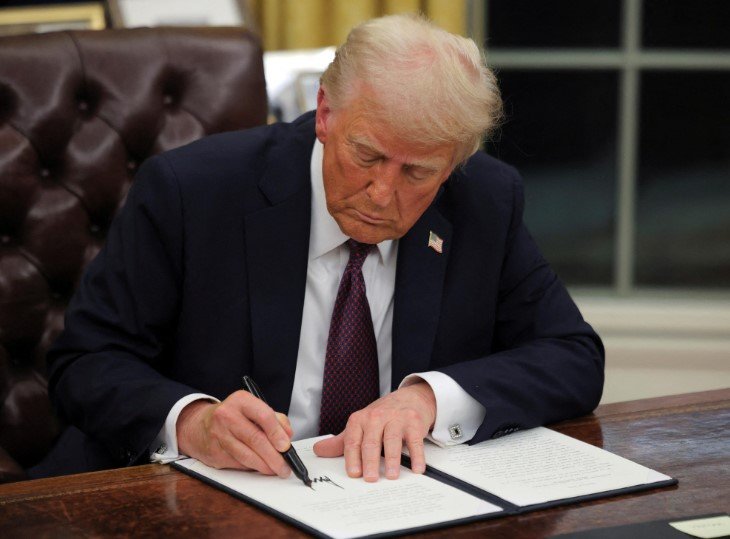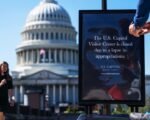President Donald Trump signed a proclamation on September 19, 2025, imposing a $100,000 annual fee on new H-1B visa applications. This move, effective from September 21, targets companies hiring skilled foreign workers, aiming to protect American jobs and boost local training, but it has sparked widespread concern in the tech industry.
The fee applies to initial petitions for workers abroad, not renewals or current holders, according to White House statements. Tech giants, which rely on H-1B visas for roles in software engineering, data analysis, and other high-skill areas, now face massive costs that could reshape hiring and innovation in the United States.
What the New H-1B Fee Involves
The H-1B visa program lets U.S. employers bring in foreign professionals for specialty jobs that require advanced knowledge. Each year, about 85,000 new visas are issued through a lottery system, with many going to tech firms.
Under the new rule, companies must pay $100,000 per application, a sharp jump from the previous $780 base fee plus smaller costs. This annual charge repeats for extensions, making it a heavy burden over time.
Officials say the goal is to stop firms from overusing the program and undercutting U.S. wages. A Commerce Department leader urged businesses to train Americans instead.
The policy comes amid ongoing debates about immigration and job markets. In 2024, over 400,000 H-1B visas were approved, with 65 percent in tech roles averaging $123,000 salaries.

Why Trump Made This Change
Trump’s team views H-1B visas as a tool that lets companies hire cheaper foreign labor, hurting American workers. Supporters argue it depresses wages in fields like IT, where U.S. graduates struggle to find high-paying jobs.
The proclamation ties into broader efforts, including a new Gold Card visa for investors putting $1 million into the U.S. economy. This shows a shift toward rewarding big investments over routine skilled hires.
Critics point out that past reforms, like wage-based priority rules, already aimed to favor higher-paid roles. Yet this fee is the boldest step, designed to make firms think twice before filing.
Economic data supports some claims. Tech wages have declined in real terms despite job growth, partly due to imported workers.
White House spokespeople call it common sense to end system abuse and encourage domestic hiring.
Experts note this fits Trump’s long-standing America First agenda, echoed by allies who have pushed for visa curbs since his first term.
Big Hit to Tech Companies
Tech leaders warn the fee could force major changes in operations. Firms like Microsoft have advised H-1B holders to return to the U.S. quickly to avoid disruptions.
The industry, especially in Silicon Valley, depends on talent from India and China. Over half a million skilled workers are here on H-1B visas, filling gaps in engineering and healthcare.
- Increased costs: A single hire could add $100,000 yearly, pushing small startups to offshore jobs.
- Hiring slowdown: Venture capitalists say no recent investment could handle this expense without cutting innovation.
- Shift to alternatives: Companies might turn to remote work abroad or other visas, like the O-1 for extraordinary ability.
One investor noted that startups, already tight on cash, might skip U.S. expansion altogether.
Larger corporations could absorb the hit but pass costs to consumers through higher prices.
Effects on Workers and Job Markets
Foreign workers face uncertainty. Many from India, who make up most H-1B recipients, may see fewer opportunities as firms balk at the fee.
For American workers, this could open doors. Reports show H-1B roles often pay below market rates, suppressing salaries for locals.
However, some economists argue it might create shortages in specialized fields, slowing tech progress.
U.S. graduates in computer science could benefit from more entry-level spots, but training programs need time to scale up.
| Aspect | Before Fee | After Fee |
|---|---|---|
| Annual New Visas | Around 85,000 | Expected drop due to costs |
| Average Tech Salary | $123,000 | Potential rise if foreign hires decrease |
| Main Users | Tech firms (65%) | Likely shift to U.S. workers or offshoring |
| Fee per Application | $780 + extras | $100,000 per year |
This table highlights key shifts, based on recent government data.
Impacted workers are rushing back, with deadlines adding pressure.
Broader Economic Ripple Effects
The fee might boost U.S. job creation but risks losing global talent. India could gain as professionals stay home, building local tech hubs.
In the U.S., sectors like healthcare and finance, which use H-1B for doctors and analysts, will feel the pinch.
Long-term, innovation could suffer if companies can’t access top minds. Silicon Valley’s edge comes from diverse teams, and this might push firms to Canada or Europe with friendlier policies.
Recent events, like tech layoffs in 2024, show a volatile job market already. Adding visa barriers could worsen talent crunches.
On the positive side, revenue from fees might fund worker training, as suggested by officials.
Industry and Political Reactions
Reactions are mixed. Tech groups call it a blow that ignores the program’s benefits, like filling skill gaps.
Politicians on both sides debate: some praise protecting jobs, others warn of economic harm.
Social media buzzes with American workers cheering potential wage boosts, while foreign professionals express worry.
Unions support the move, seeing it as a win for locals in a tough economy.
As 2025 unfolds, the full impact will emerge, but early signs point to a transformed landscape.
What do you think about this policy? Share your thoughts in the comments and spread the word to keep the conversation going.








